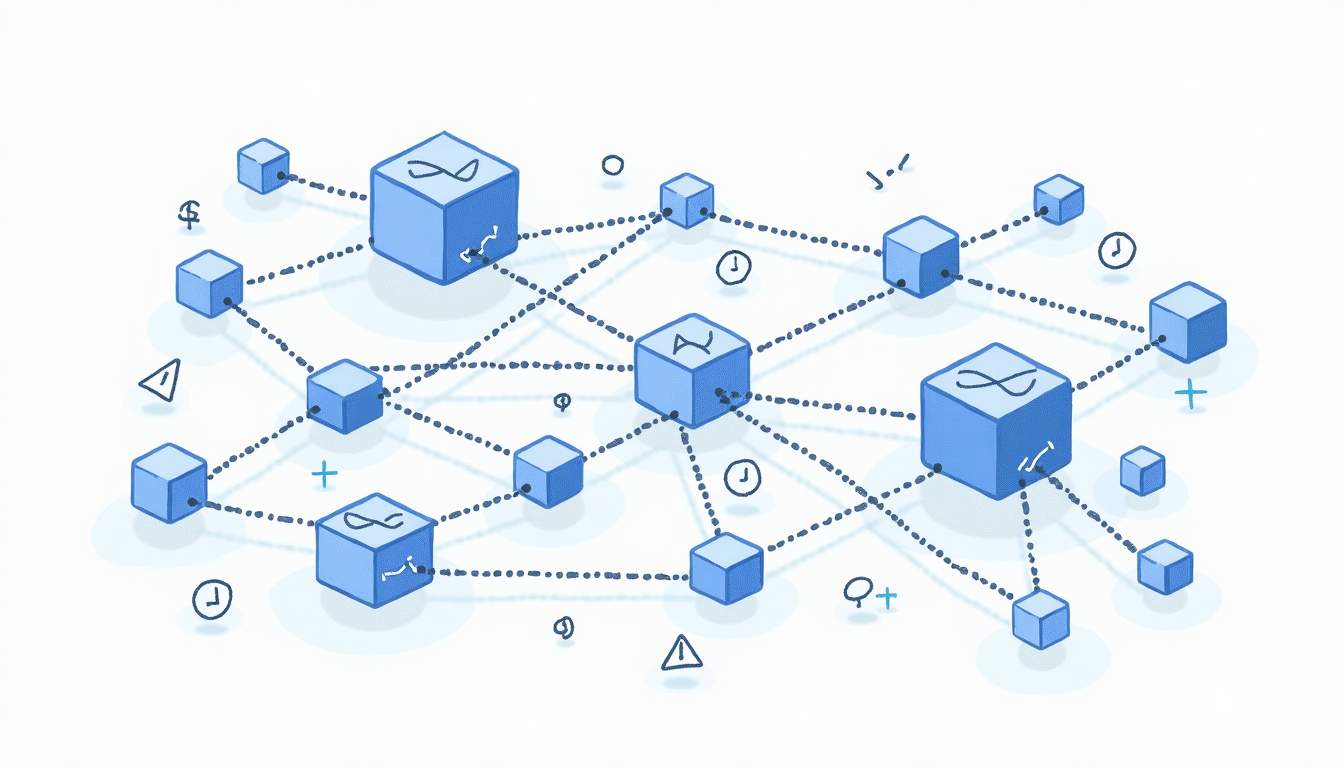How Infra Downtime Impacts User Retention in DeFi
Decentralized Finance (DeFi) has revolutionized the way users interact with financial services by leveraging blockchain technology. However, the underlying infrastructure that powers DeFi platforms—particularly Remote Procedure Call (RPC) endpoints—plays a critical role in ensuring seamless user experiences. Infrastructure downtime, even if momentary, can severely impact user retention, trust, and the overall success of DeFi projects. This article explores how infra downtime affects user retention in DeFi, why it happens, and strategies to mitigate these risks.
Understanding Infrastructure Downtime in DeFi
Infrastructure downtime refers to periods when blockchain nodes or RPC providers become unavailable or unresponsive. Since DeFi applications rely heavily on real-time interactions with blockchain networks, any interruption in RPC services can cause transaction delays, failed requests, or incorrect data retrieval.
RPC (Remote Procedure Call) endpoints act as the communication bridge between decentralized applications (dApps) and blockchain networks. When these endpoints experience downtime, users may face issues such as:
- Inability to execute transactions
- Delayed updates on wallet balances or token prices
- Failed smart contract interactions
Such disruptions can frustrate users, leading to decreased trust and eventual abandonment of the platform.
The True Cost of RPC Downtime
RPC downtime is not just a technical inconvenience; it carries significant economic and reputational costs. For DeFi platforms, even a few minutes of downtime can result in lost trading opportunities, failed liquidity provision, or missed arbitrage windows. This can translate into substantial financial losses for users and the platform alike.
Moreover, downtime erodes user confidence. In a competitive market where alternative DeFi platforms are readily available, users are quick to switch if they perceive unreliability. Studies show that users expect near-instantaneous responses from financial applications, and delays beyond a few seconds significantly increase abandonment rates.
In addition to the immediate financial implications, the long-term effects of infrastructure downtime can be even more damaging. Repeated incidents can lead to a tarnished reputation, making it difficult for platforms to attract new users or retain existing ones. The DeFi space is particularly sensitive to reputation, as word-of-mouth and community trust play crucial roles in user acquisition. Platforms that consistently deliver reliable service are more likely to foster a loyal user base, while those that do not may find themselves struggling to survive in an increasingly crowded marketplace.
Furthermore, the technical aspects of mitigating downtime are complex and require a robust infrastructure. Many DeFi projects are now investing in redundancy measures, such as multiple RPC providers and failover systems, to ensure that their services remain operational even when one provider experiences issues. This proactive approach not only helps to minimize downtime but also enhances the overall user experience, allowing for smoother interactions with the blockchain and a more resilient ecosystem.
Why Infra Downtime Happens in DeFi
Several factors contribute to infrastructure downtime in DeFi applications, including:
Single RPC Provider Dependence
Many DeFi projects rely on a single RPC provider for blockchain connectivity. While this simplifies development, it introduces a single point of failure. If the provider experiences an outage, the entire application becomes inaccessible. This risk is well-documented in the blockchain community, highlighting the hidden dangers of single RPC provider dependence. Developers often overlook the importance of diversifying their RPC sources, which can lead to catastrophic failures during critical moments. By integrating multiple providers, projects can enhance their resilience, ensuring that if one provider goes down, others can seamlessly take over, maintaining user access and trust.
Network Congestion and Latency
Blockchain networks can experience congestion during high-traffic events such as token launches or major market movements. This congestion increases latency and can cause RPC endpoints to time out or reject requests, leading to perceived downtime from the user’s perspective. Additionally, the scalability of the underlying blockchain technology plays a crucial role in managing congestion. As more users flock to DeFi platforms, the demand on network resources intensifies, often outpacing the infrastructure's ability to handle it. Solutions like layer-2 scaling or sharding are being explored to alleviate these issues, but until widely adopted, users may continue to face frustrating delays during peak times.
Insufficient Infrastructure Redundancy
Without proper redundancy mechanisms, such as multi-region RPC routing or multi-cloud proxies, DeFi platforms are vulnerable to regional outages or cloud provider failures. These infrastructure gaps can magnify downtime risks. Furthermore, the reliance on a single geographic location for server hosting can lead to significant vulnerabilities, especially in the face of natural disasters or localized internet outages. Implementing a distributed architecture that spans multiple regions not only enhances reliability but also improves performance by reducing latency for users in different parts of the world. As the DeFi ecosystem continues to grow, the need for robust, resilient infrastructure will become increasingly critical to support the ever-expanding user base and transaction volume.
Impact on User Retention in DeFi
User retention is a key metric for DeFi platforms aiming for sustainable growth. Infrastructure downtime directly impacts retention through several mechanisms:
Loss of Trust and Credibility
DeFi users expect transparency and reliability. Downtime undermines these expectations, making users question the platform’s professionalism and technical robustness. Once trust is lost, it is difficult to regain, especially in a decentralized environment where reputation is paramount.
Decreased User Engagement
Repeated failures or slow responses discourage users from engaging with the platform. They may reduce transaction frequency or stop using the platform altogether, opting for competitors with better uptime guarantees.
Negative Word-of-Mouth and Social Proof
In the tight-knit DeFi community, users share experiences rapidly. Downtime incidents often lead to negative reviews and social media backlash, amplifying the impact on potential new users and existing ones alike.
Strategies to Mitigate Infra Downtime and Improve Retention
To maintain high user retention, DeFi projects must prioritize infrastructure reliability. Here are key strategies to reduce downtime risks:
Implement RPC Auto-Routing and Multi-Provider Solutions
RPC auto-routing intelligently distributes requests across multiple RPC providers, ensuring that if one endpoint fails, traffic is automatically redirected to healthy providers. This approach enhances reliability and reduces the risk of total outages.
Multi-provider RPC routing also helps balance load and reduce latency by selecting providers based on geographic proximity and performance metrics. This redundancy is essential for maintaining seamless user experiences during peak periods.
Leverage Multi-Cloud and Multi-Region Infrastructure
Using multi-cloud proxies (MCP) and multi-region RPC routing can significantly improve uptime and reduce latency. By orchestrating API calls across diverse cloud providers and geographic locations, DeFi platforms can avoid single points of failure and improve response times globally.
Monitor and Optimize RPC Costs Without Sacrificing Reliability
Cost optimization is critical for startups and growing DeFi projects. Auto-routing solutions can reduce RPC costs by dynamically selecting the most cost-effective providers without compromising uptime. This balance allows platforms to scale efficiently while maintaining high availability.
Continuous Monitoring and Incident Response
Proactive monitoring of RPC endpoints and blockchain nodes enables rapid detection of issues before they impact users. Coupled with automated failover mechanisms, this approach minimizes downtime duration and user impact.
Conclusion: Infrastructure Reliability as a Pillar of DeFi Success
Infrastructure downtime in DeFi is more than a technical challenge—it is a critical factor influencing user retention, trust, and platform viability. As DeFi continues to grow and attract mainstream users, ensuring seamless, reliable blockchain connectivity must be a top priority.
By adopting advanced RPC auto-routing, multi-provider strategies, and multi-cloud architectures, DeFi projects can mitigate downtime risks, enhance user experiences, and foster long-term loyalty. In an ecosystem where users have abundant alternatives, infrastructure reliability is a decisive competitive advantage.
Ultimately, the future of DeFi depends not only on innovative financial products but also on the robustness of the infrastructure that powers them.
As you've seen, infrastructure reliability is not just a luxury—it's a necessity for DeFi success. Uniblock understands this imperative and offers a solution that aligns perfectly with the needs highlighted in this article. Our Web3 infrastructure orchestration platform is designed to address the very challenges of downtime and user retention. With over 2,000 developers and support for 100+ chains, Uniblock is the go-to platform to ensure your DeFi project remains robust and responsive. Don't let infra downtime derail your project's growth. Start building with Uniblock today and experience the peace of mind that comes with a reliable, scalable, and cost-effective infrastructure.
.svg)






